
Our students are immersed in the outdoors from their early childhood days through high school. Science tells us about the benefits of extended time spent in nature, and we know this truth from our own experience. In the coming year, we are embracing outdoor education more fully than ever before, as a centerpiece of our curriculum.
Construction on six new outdoor classrooms is nearly complete
The drawings below, done by Lake Champlain Waldorf School eleventh grade student Wren Van Deusen, capture our vision for how these learning spaces will look.
Over the summer, we have held Work Days where parent volunteers have assembled convertible benches/desks that will be used in our outdoor classrooms, made pathways along the trails to protect our wetlands, and hauled stumps to the classroom sites. We plan to have four classrooms completed by the start of the school year, and our students will create the two remaining classrooms. We also have seven pop-up tents for outdoor learning spaces as well.
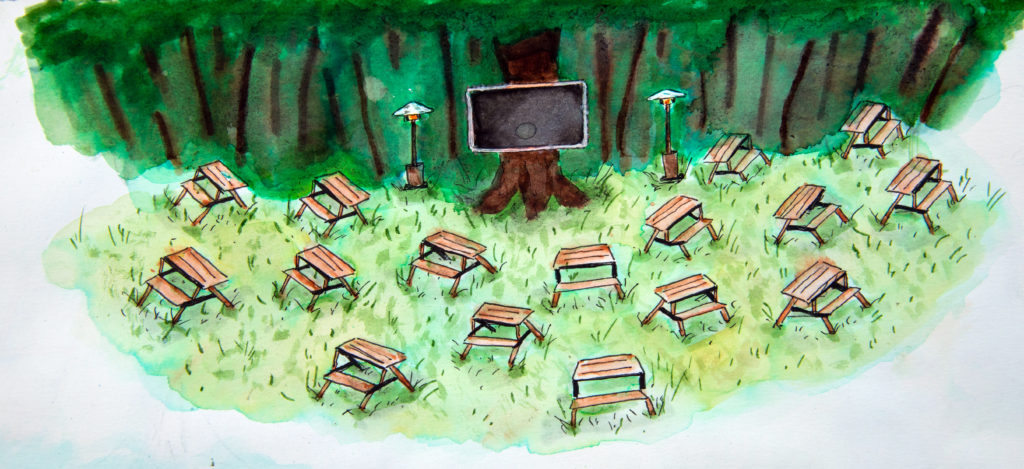
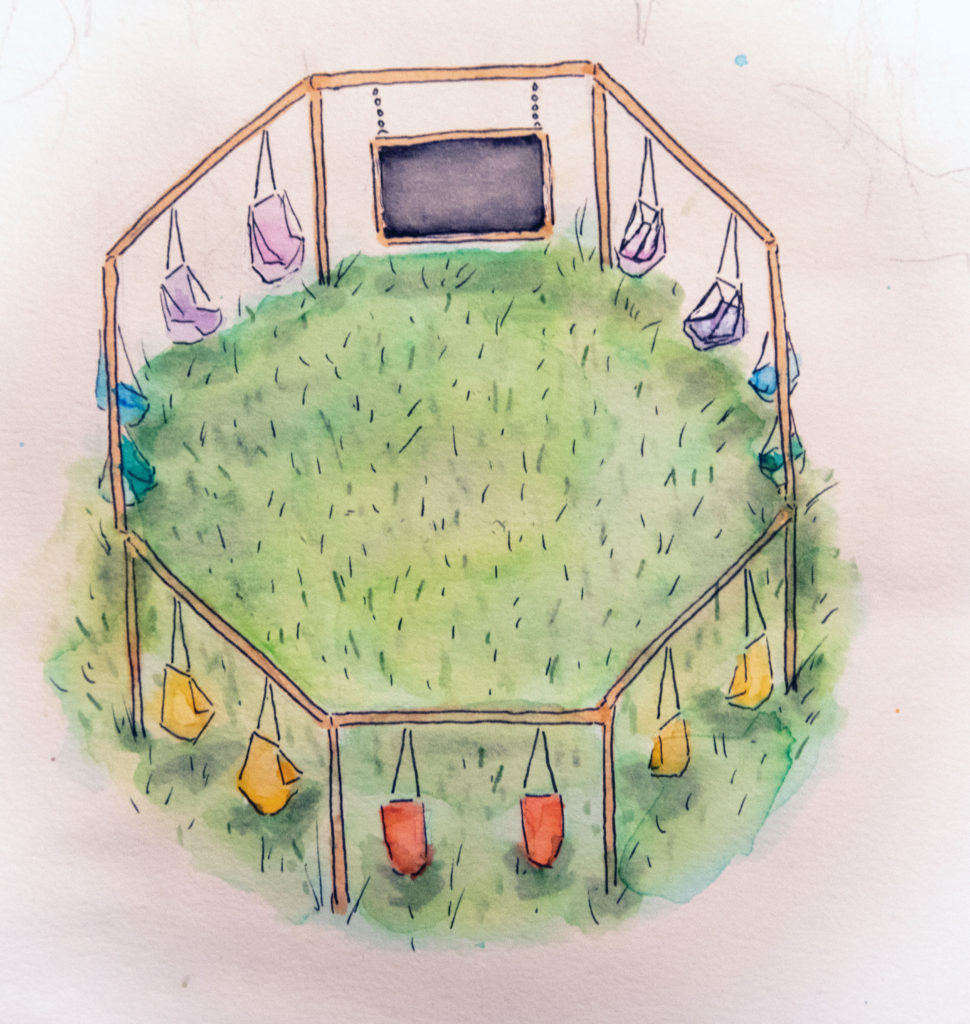
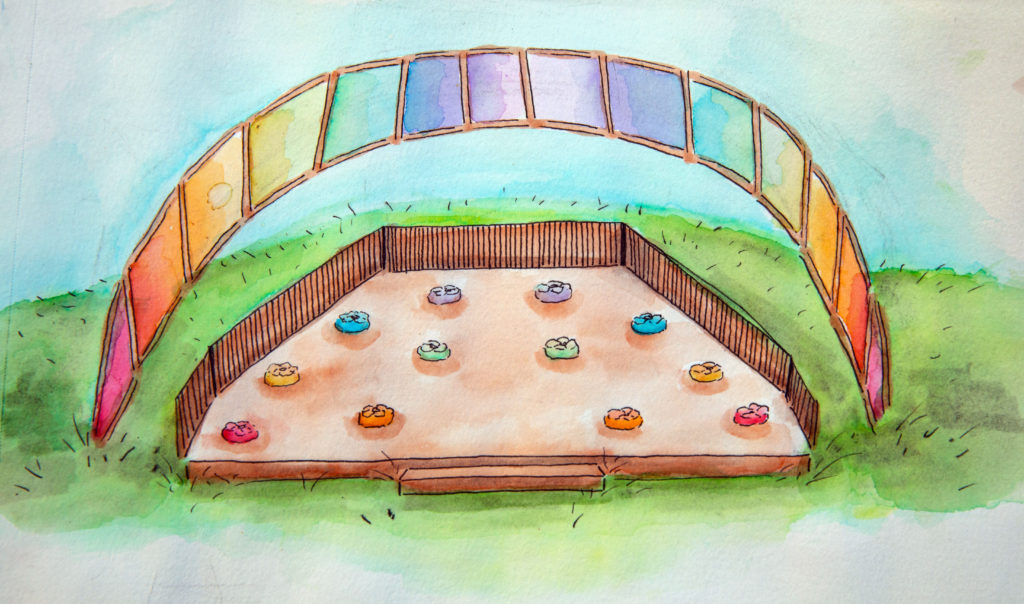
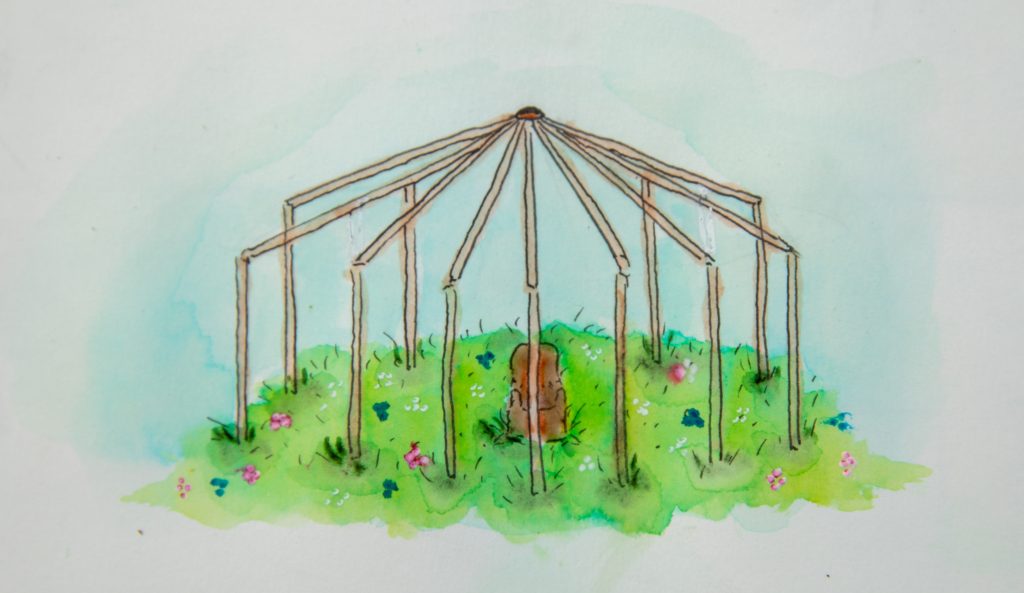
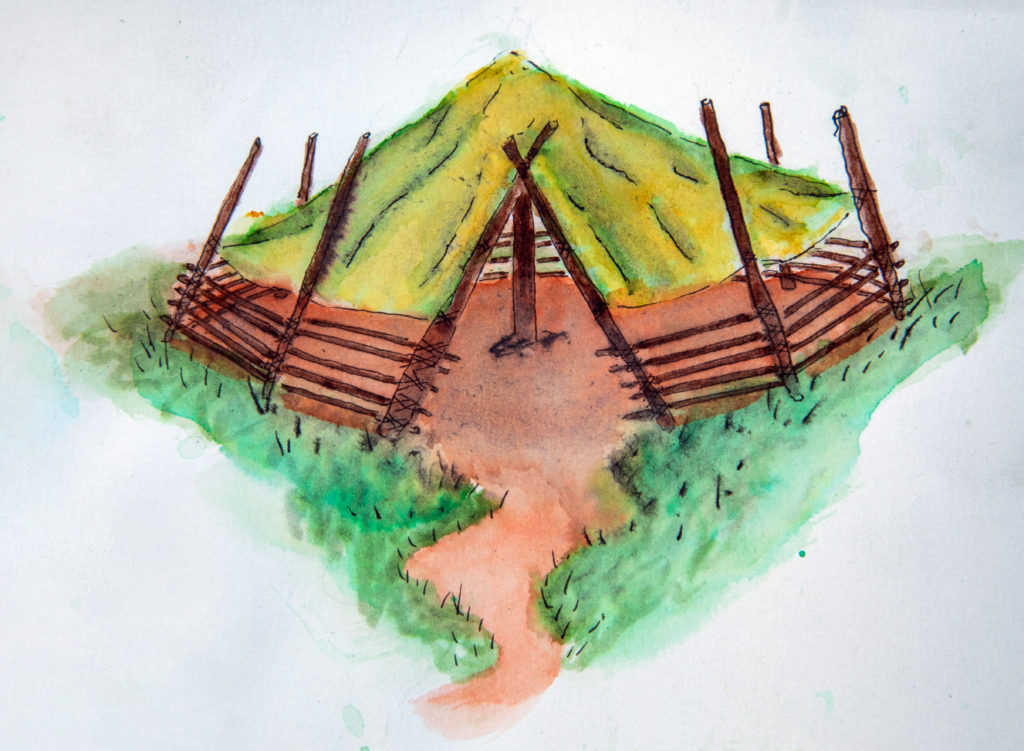
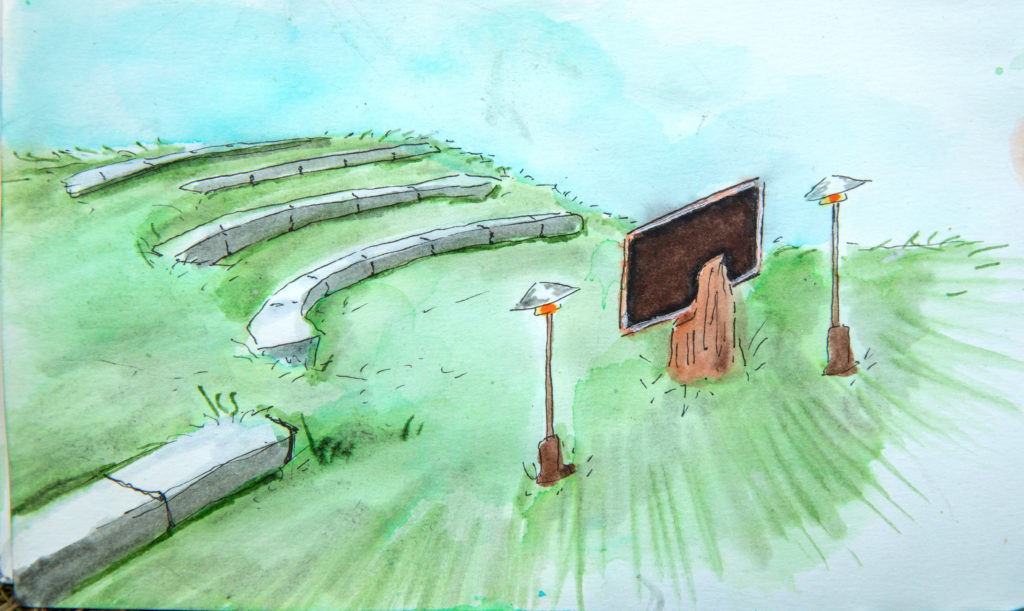
Exploring academics while outside allows learning to be experienced fully, and encourages creative thinking and problem-solving. As children and young adults engage in the physical work of tending animals and caring for the land, stewardship of the earth becomes instinctual. As they learn and grow, students develop the confidence to face challenges head-on and the skills and knowledge to make a difference.
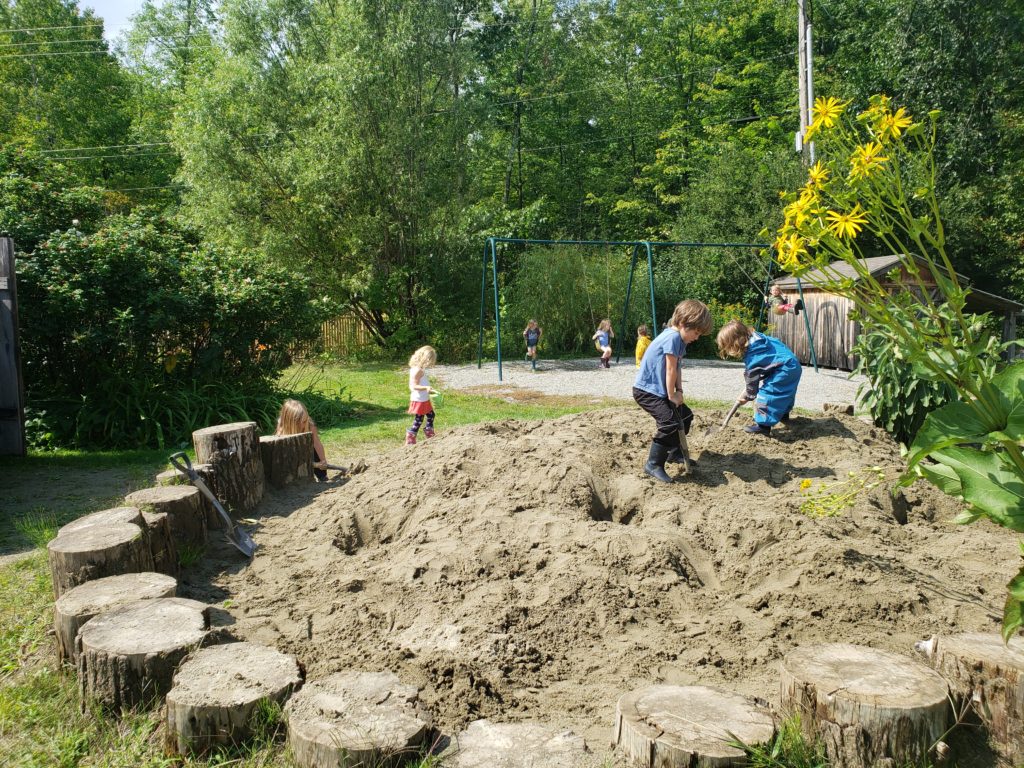
Rain or shine, our students are outside every day.
Our students in the early childhood program spend long stretches of time on our outdoor playground and tromping through the forest each day, learning to work and play together. Many days, the only inside time is for a snack, and even meals are often shared outdoors! Whatever the weather, children are dressed for outdoor play — prepared to handle the elements and enjoy the freedom and nourishment of the natural world.
Being outdoors is known to have a regulating effect, and we witness this alchemy in our students every day. In the lower grades, outdoor play continues daily, and lessons take place outside throughout the year. Our grade school students begin their study of environmental education, learning survival skills such as shelter building and igniting and keeping a fire in all conditions. Our teachers use elements of the natural world in every subject, bringing the curriculum to life in meaningful ways.
As students’ capacity for thinking expands, the natural world is there to meet them in all its complexity.
Classes venture into forest and field to deepen their understanding of a wide range of subjects, from science to art, and from languages to literature. Longer periods spent outdoors cultivate resilience, culminating in week-long treks in high school where the students find previously unknown strengths in themselves in each other.
Resources
The Benefits of Learning Outdoors
Outdoor Education Beyond Environmentalism
Reimagining School: What if We Physically Distanced from Four Walls and a Desk?

